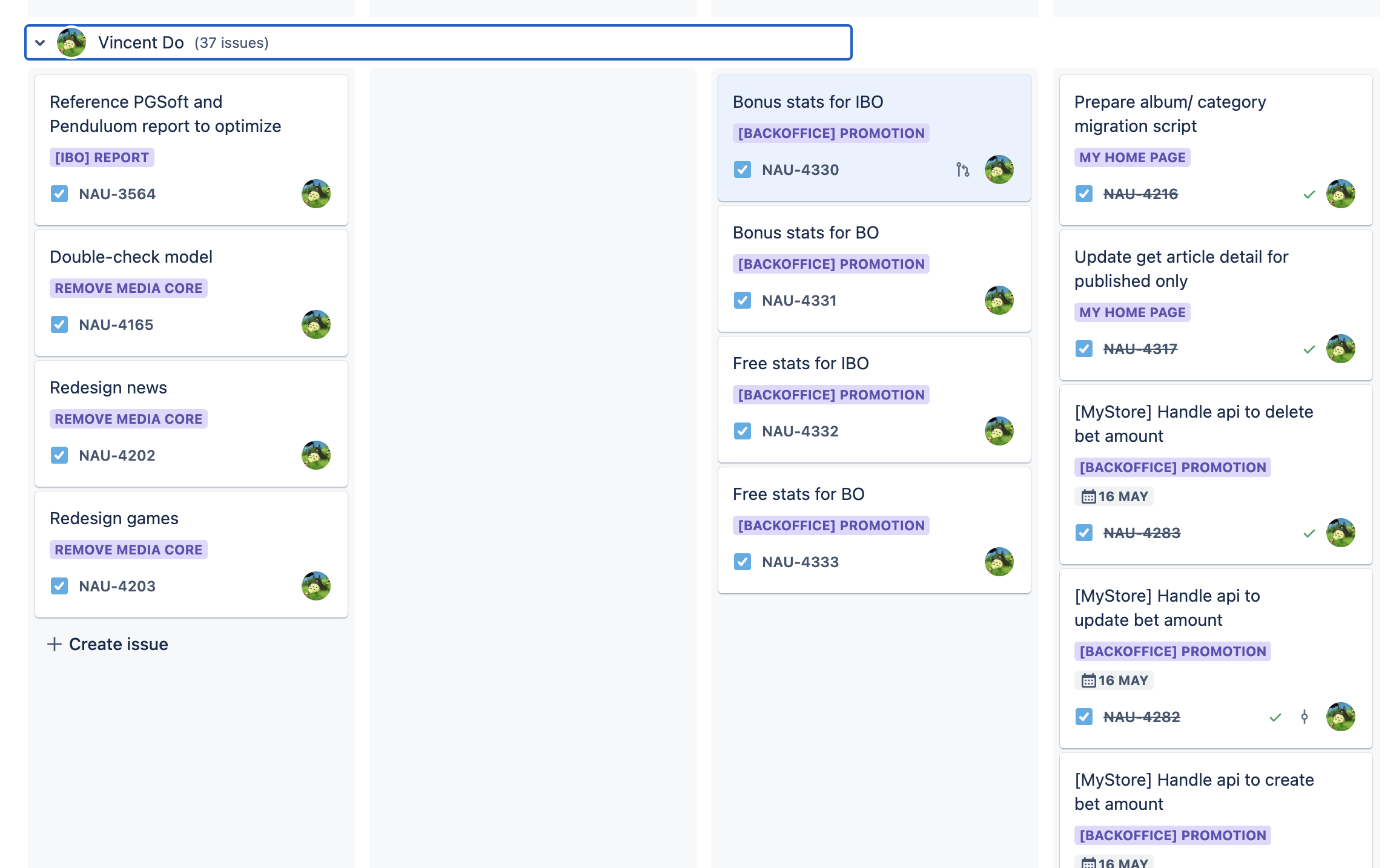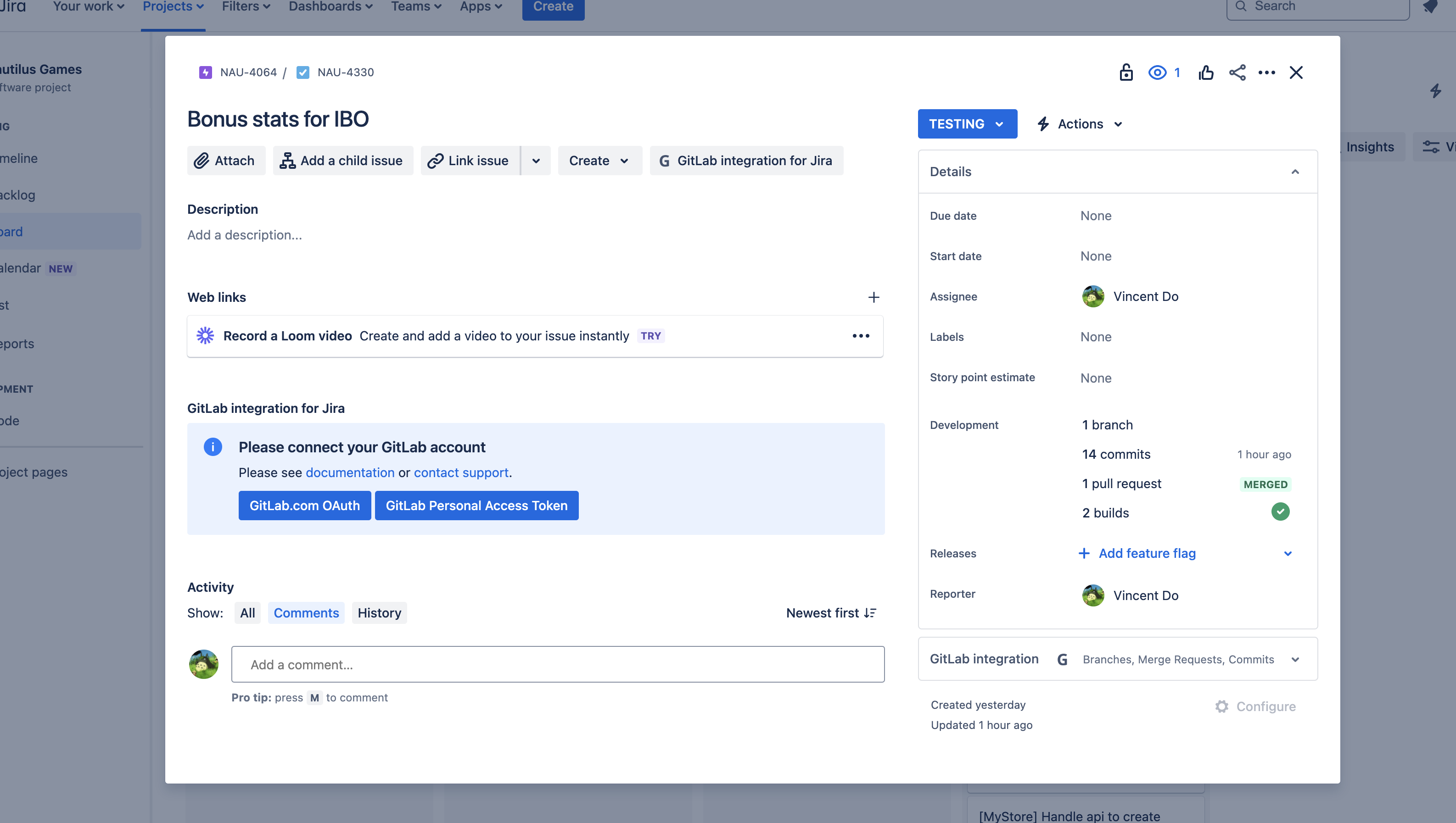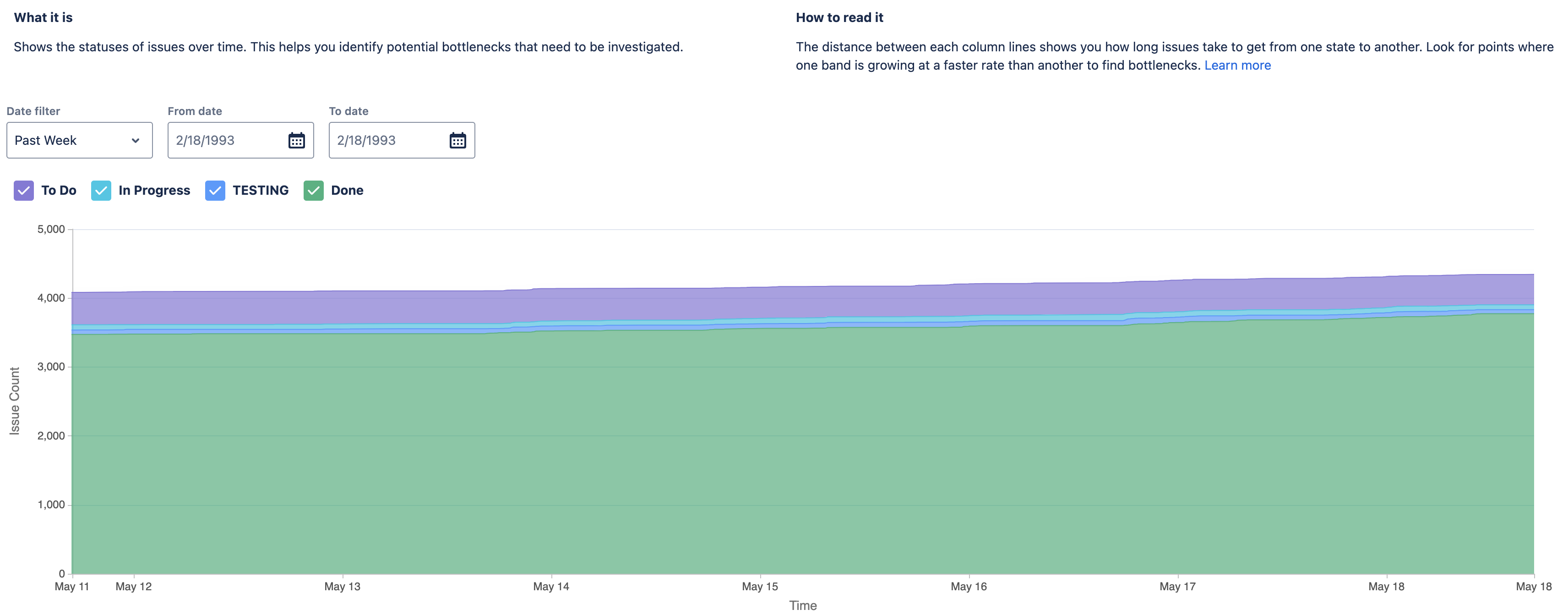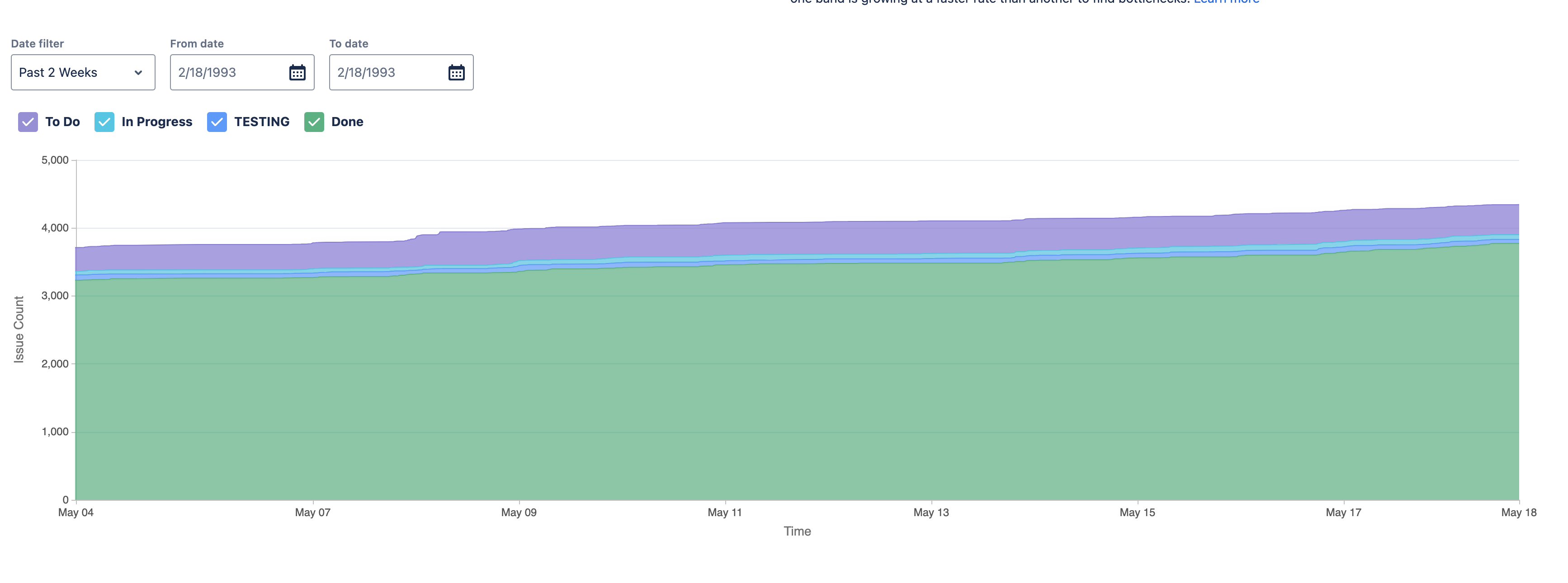Project Management
Method
We are using kanban and scrum hybrid to manage projects and estimate effort
Structure
Board

It ensures that the team visualizes their work, standardizes their workflow, and immediately identifies and resolves all blockers and dependencies.
A basic kanban board has a three-step workflow: To Do, In Progress, and Done. However, depending on a team's size, structure, and objectives, they can map the workflow to meet their unique processes. (We have a testing stage for bug tickets)
Because the kanban methodology relies upon full transparency of work and real-time communication, the kanban board acts as the single source of truth for the team's work.
Swimlane
Each person has their own swimlane that contain their tickets

Card
Cards feature critical information about project tasks, giving teams visibility into who is responsible for which tasks and a brief description of the job, and how long tasks are estimated to take.
Cards on virtual kanban boards often feature screenshots and other technical details that are valuable to the assignee.
Enabling team members to view the status of each task at any moment, alongside relevant details, promotes heightened focus, comprehensive traceability, and rapid identification of blockers and dependencies.

Estimating
4 point = 1 working day
Based on that, please estimate the point on your tickets in Story point estimate (start and end date are nice to have)
After hours/ Late night or weekend work will also use the above estimation
Benefits
Planning flexibility
A kanban team focuses only on the work that's actively in progress. Once the team completes a task, they select the next task from the backlog
The PO is free to reprioritize work in the backlog without disrupting the team because any changes outside the current work items don't impact the team.
As long as the product owner keeps the most important work items on top of the backlog, the development team can rest assured they are delivering maximum value back to the business.
Fewer bottlenecks
Multitasking kills efficiency. Increased workload simultaneously leads to more frequent context switching, impeding the progress of tasks toward completion. That's why a vital tenet of the kanban process is limiting the work in progress (WIP).
Work-in-progress limits highlight bottlenecks in the team's process due to a lack of focus, people, or skill sets.
Shortened time cycles
Cycle time is a key metric for Kanban teams. Cycle time is the amount of time it takes for a unit of work to travel through the team's workflow—from the moment work starts to the moment it ships. By optimizing cycle time, the team can confidently forecast the delivery of future work.
Overlapping skill sets lead to shorter cycle times. When only one person holds a skill set, that person becomes a bottleneck in the workflow.
Therefore, teams employ best practices like code review and mentoring to help spread knowledge. Shared skills mean team members can take on heterogeneous work, further optimizing cycle time.
Additionally, this approach empowers the entire team to address any work bottlenecks collectively, facilitating a swift resolution and ensuring a smooth workflow.
For example, testing responsibilities extend beyond QA engineers to include developers, fostering a collaborative effort to maintain efficiency. In a kanban system, the entire team ensures work moves smoothly through the process.
Fun fact: Nautilus cycle is between 1 & 2 weeks, long enough for a sprint in scrum

